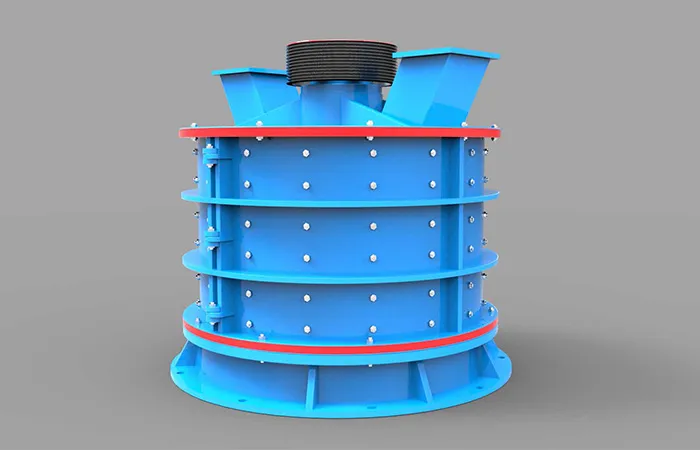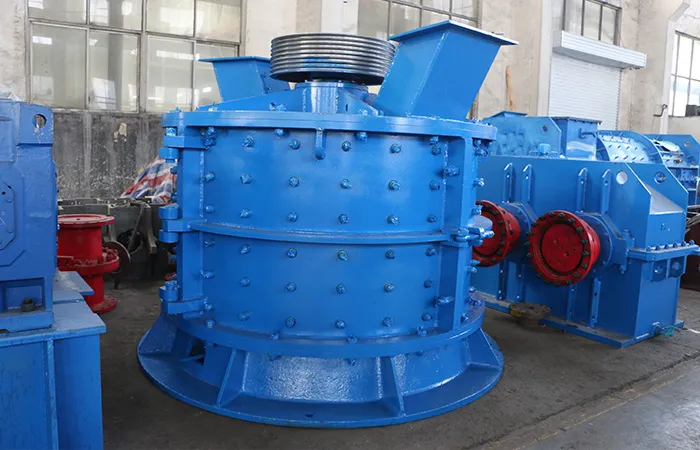A vertical compound crusher, also known as a composite crusher, combines the principles of impact, grinding, and crushing to effectively break down materials into smaller sizes. This crusher is widely used in various industries, including mining, metallurgy, building materials, and chemical engineering.

Capacity (t/h):
Varies depending on the model and material being processed.
Typical range: 10-200 t/h.
Feeding Size (mm):
Maximum feeding size: 50-100 mm.
It can handle materials with a certain degree of hardness and moisture.
Output Size (mm):
Adjustable, typically 0-5 mm.
Achieves fine crushing and uniform particle size distribution.
Rotor Diameter (mm):
Depending on the model, rotor diameter can vary.
Common range: 800-2000 mm.
Rotor Speed (r/min):
Influences the crushing efficiency and particle size.
Typical range: 800-1500 r/min.
Power (kW):
Depends on the size and capacity of the crusher.
Typical range: 22-250 kW.
Weight (kg):
The weight varies depending on the size and model of the crusher.
Common range: 3000-15000 kg.
Dimensions (L x W x H) (mm):
Varies by model.
Example: 2100x2000x2200 mm (for a medium-sized crusher).
Reduction Ratio:
Typically ranges from 4:1 to 8:1.
Indicates the efficiency of size reduction.
Material Hardness:
Capable of processing materials with a Mohs hardness of up to 7-8.

High Crushing Efficiency:
Combines impact, grinding, and crushing mechanisms to achieve high crushing efficiency.
Adjustable Output:
The output size can be adjusted by altering the gap between the impact plate and the grinding plate.
...
For more detailed information on the technical parameters of vertical compound crusher, please click to visit: https://www.zymining.com/en/a/news/vertical-compound-crusher-technical-parameters.html